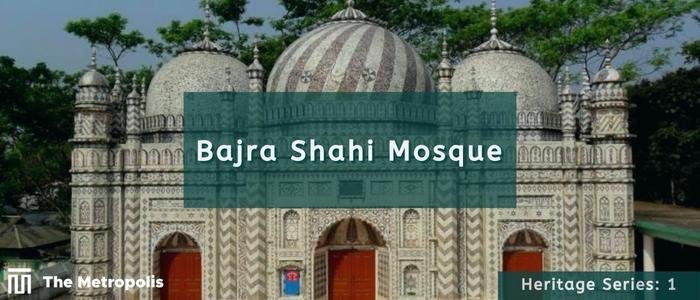Sidratul Mahmud –
Bajra Shahi Mosque is a historic mosque located in the Bajra Shahi village of Sonaimuri Upazila in Noakhali, Bangladesh. It is regarded as one of the oldest and most beautiful mosques in the nation and has a rich history. The mosque was built in 1741-42 AD by a man named Aman Allah under the rule of the Mughal emperor Muhammad Shah, according to an inscription that is fixed over the main gateway.
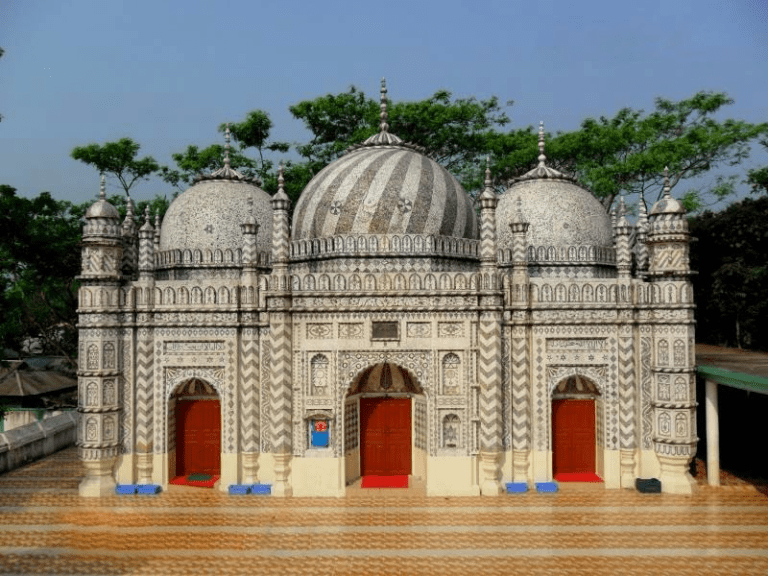
It went through major repairs between 1911 and 1928, and the plastered wall was replaced by chini-tikri (Chinese ceramics) decoration, a distinctive art that was a highly common method of surface decorating in that area. It is currently listed as a protected site by the government’s Department of Archaeology because of its generally good state of preservation.
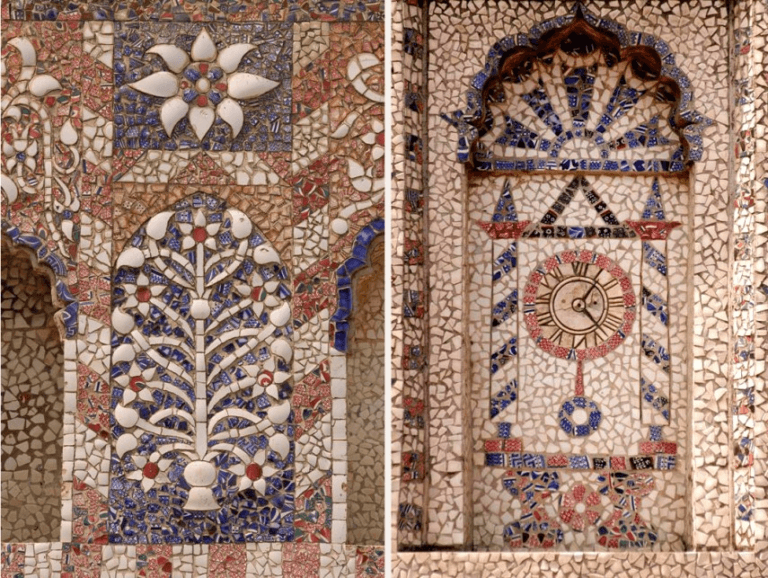
The mosque is a unique example of Mughal architecture. The prayer hall is enclosed by a brick wall that has an external footprint of 15.77 by 7.54 meters and is 1.28 meters thick. From the eastern side, three alcove archways are leading into the prayer hall, and there is a one-pointed archway on each of the other two walls. All of the entryway arches are flanked by octagonal turrets that have a pinnacle on top and are enclosed by recessed wall panels.
The majestic staircase that leads up to the stunning entrance of this historic mosque offers standing or resting areas for guards on its southern and northern sides. The upper floor, or the dome-covered pillared pavilion used for azan, is accessed by one flight of stairs from the north.
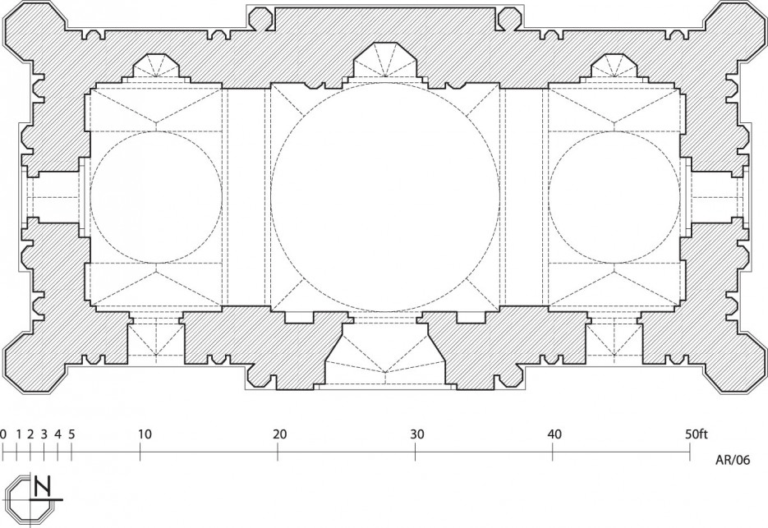
The mosque’s design is centered around the concept of symmetry, with two minarets standing tall on either side of the entrance. The ceiling is supported by several thin columns, and the walls are decorated with elaborate geometric patterns. The mosque also has several dome-shaped structures, which enhances its overall aesthetic appeal.
The Bazra Shahi Mosque’s interior is equally magnificent, with the walls decorated with fine tile work and beautiful calligraphy. Several arched windows in the main prayer hall provide adequate light and foster a calm and quiet ambiance. The mosque also has a sizable courtyard that is ideal for meeting and mingling with other worshipers.
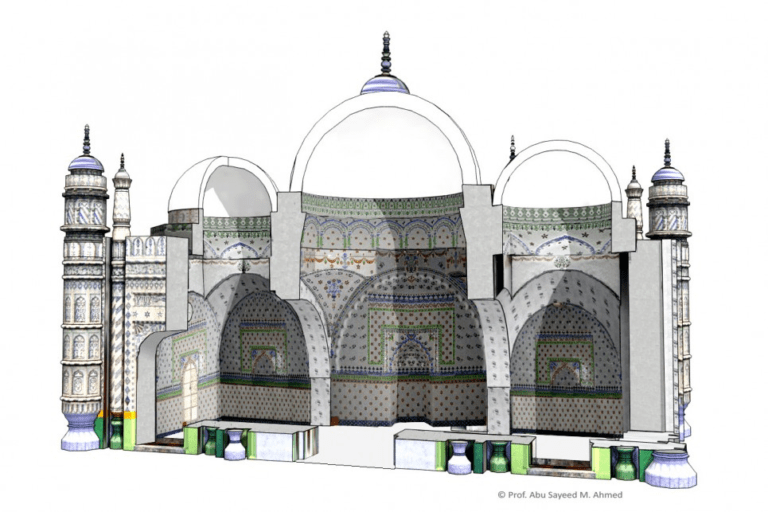
In addition to its architectural beauty, the Bajra Shahi Mosque is also known for its religious significance. For the locals, it is a well-liked site of worship, and also draws a sizable number of tourists who come to pray and pay respects.
Hazrat Maulana Shah Abu Siddique, a resident of the holy city of Mecca and one of the most illustrious intellectuals of the period, was chosen as the first Imam of this illustrious mosque at the particular request of the Mughal Emperor Mohammad Shah. His successors continue to fulfill the responsibilities of this mosque’s Imam by their credentials.
The Bajra Shahi Mosque is regarded as an asset for the nation and is a significant cultural and historical landmark in the area. Additionally, it is a representation of the region’s rich cultural legacy and a monument to the elegance and complexity of Mughal construction. If you are planning a visit to this historic mosque, you can take the following options:
-
By Train: Take a train (Upakul Express) from Dhaka to Noakhali, get off at Bajra station, and then take a rickshaw or local transportation to reach the mosque.
-
By Bus: You can take a direct bus (Econo, Dhaka Express, Miami, Ekushey, Lal Sobuj, Himachal, etc.) from Dhaka to Noakhali, get off at Bajra station and then take a rickshaw or local transportation to reach the mosque.
-
By Car: You can rent or take a car from Dhaka to Noakhali, which is about 4 hours away.
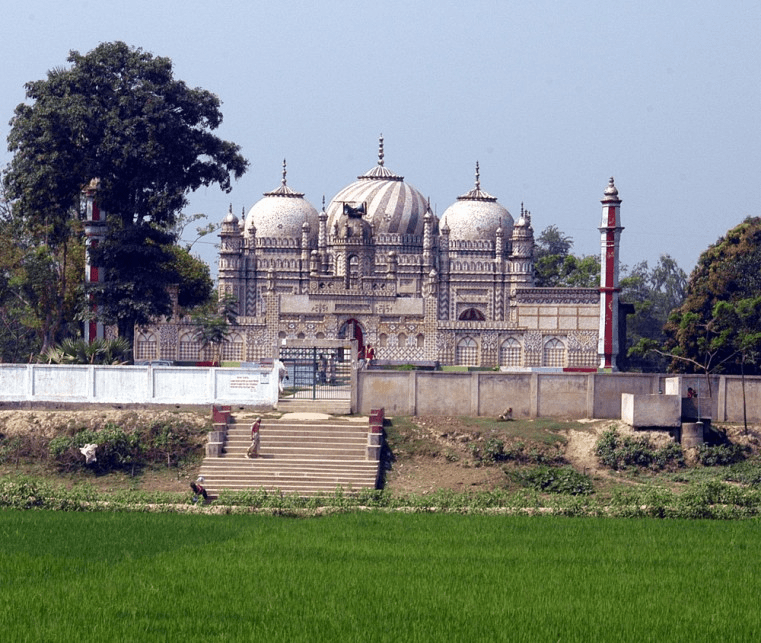
The Bajra Shahi Mosque is surrounded by lush green paddy fields, small villages, and rural communities. The region is renowned for its stunning scenery, peaceful ambiance, and traditional way of life. A few miles from the mosque, there are several neighborhood stores, tea shops, and cafés where guests can taste regional food and interact with the locals. The Bajra Shahi Mosque is surrounded by a serene and unusual landscape that perfectly combines religion, nature, and a traditional way of life.



